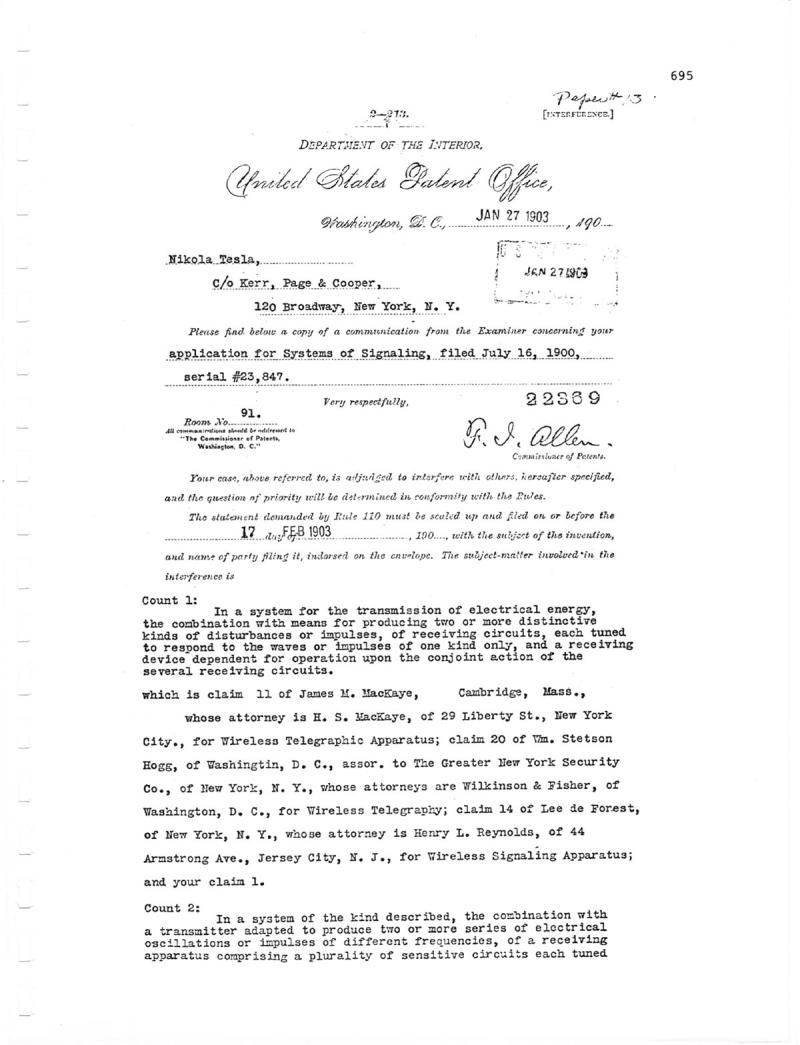
Nikola Tesla Patents
Nikola Tesla U.S. Patent 725,605 - System of Signaling Patent Wrapper Page 81
C 1 T Nikola Tesla, 2-213. DEPARTMENT OF THE INTERIOR, United States Patent Office, JAN 27 1903 Washington, D.C.,. c/o Kerr, Page & Cooper,....... 91. Room No............. All communications should be ndeiressed to "The Commissioner of Patents, Washington, D. C." Paper 13 [INTERFERENCE.] Very respectfully, 190..... 120 Broadway, New York, N. Y. Please find below a copy of a communication from the Examiner concerning your application for Systems of Signaling, filed July 16, 1900, serial # 23, 847. JAN 271903 22369 Fr. J. Allen. Commissioner of Patents. Your case, above referred to, is adjudged to interfere with others, kereafter specified, and the question of priority will be determined in conformity with the Rules. The statement demanded by Rule 110 must be sculed up and filed on or before the 17 FEB 1903 190...., with the subject of the invention, and name of party filing it, indorsed on the cnvelope. The subject-matter involved in the interference is Count 1: In a system for the transmission of electrical energy, the combination with means for producing two or more distinctive kinds of disturbances or impulses, of receiving circuits, each tuned to respond to the waves or impulses of one kind only, and a receiving device dependent for operation upon the conjoint action of the several receiving circuits. which is claim 11 of James M. MacKaye, Cambridge, Mass., whose attorney is H. S. MacKaye, of 29 Liberty St., New York City., for Wireless Telegraphic Apparatus; claim 20 of Wm. Stetson Hogg, of Washingtin, D. C., assor. to The Greater New York Security Co., of New York, N. Y., whose attorneys are Wilkinson & Fisher, of Washington, D. C., for Wireless Telegraphy; claim 14 of Lee de Forest, of New York, N. Y., whose attorney is Henry L. Reynolds, of 44 Armstrong Ave., Jersey City, N. J., for Wireless Signaling Apparatus; and your claim 1. Count 2: In a system of the kind described, the combination with a transmitter adapted to produce two or more series of electrical oscillations or impulses of different frequencies, of a receiving apparatus comprising a plurality of sensitive circuits each tuned 695
